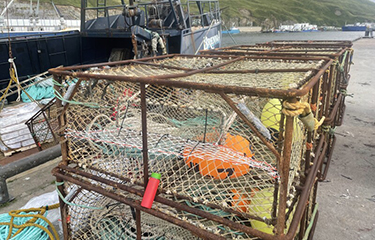In the wake of Alaska’s closure of the Bering Sea snow crab, red king crab, and blue king crab fisheries for 2022-2023 season, and likely for coming years, a group representing commercial crab fishermen in the U.S. state is calling for reform to how and what fishing gear is used in Alaskan waters.
Alaska Bering Sea Crabbers Executive Director Jamie Goen said it is her hope reducing the impacts of other gears on crab will hasten the resource’s recovery.
“We don’t believe that crab bycatch is the cause of the snow crab decline,” Goen said. “But we think it could slow down the recovery.”
Goen attributed the rapid and dramatic drop in snow crab abundance in Alaska to a number of factors, mostly related to climate change.
“We know that climate was a main driver of the snow crab decline,” Goen said. “There was an absence of sea ice at a time when the snow crab population was exploding, and that created a number of problems.”
But Goen said she sees a corollary relationship between pelagic trawling and the decline in Alaskan red king crab populations.
“The red king crab abundance has been going down for 10 years,” Goen said. “That’s consistent with an increase in pelagic trawling in the Red King Crab Savings Area in Bristol Bay.”
Goen cited science indicating pelagic trawl gear can be on bottom as much as 100 percent of the time. “They are letting those boats in there when the crab have molted and are vulnerable,” she said. “We believe mortality on the crab could be much higher than what is being observed, especially when they are soft after molting.”
In January 2023, the National Oceanic and Atmospheric Administration denied the ABSC’s request for emergency action to close the Red King Crab Savings Area. Despite that setback for her group, Goen said there are a number of other solutions her group will pursue to keep the pelagic gear away from Alaska’s crab populations, such as bottom-contact sensors and depth sensors paired with restrictions on bottom contact.
But the crabbers’ concerns are not limited to the trawlers.
“Every gear type that interacts with a species has an impact,” said Goen, noting that the pot cod fishery is working on gear modifications to reduce crab bycatch. “In our directed fishery we’re looking at larger mesh sizes and longer soaks so that when the bait is gone the smaller crabs and females have no reason to stay in the pot. That will reduce the number of elevator rides for those crabs. When the weather is cold and windy on deck it’s hard on them.”
Recognizing that all fishing gear can affect both target and non-target species, Goen said her group still sees trawlers as having a potentially significant negative impact on a snow crab stocks.
“Given their mobility, increase effort, large footprint of their gear on the ocean floor, and their fishing on molting and mating crab – all part of unobserved fishing mortality not counted toward bycatch – there should be a shared burden of conservation,” Goen said. “Especially when the stock is at a level of conservation concern. NOAA and the North Pacific Council should be erring on the side of caution.”
The crabbers want pelagic trawl gear off bottom or managed as bottom trawl.
“But we’re not seeing meaningful action from our federal partners,” Goen said.
Reporting by Paul Molyneaux
Photo courtesy of Cory Lescher







